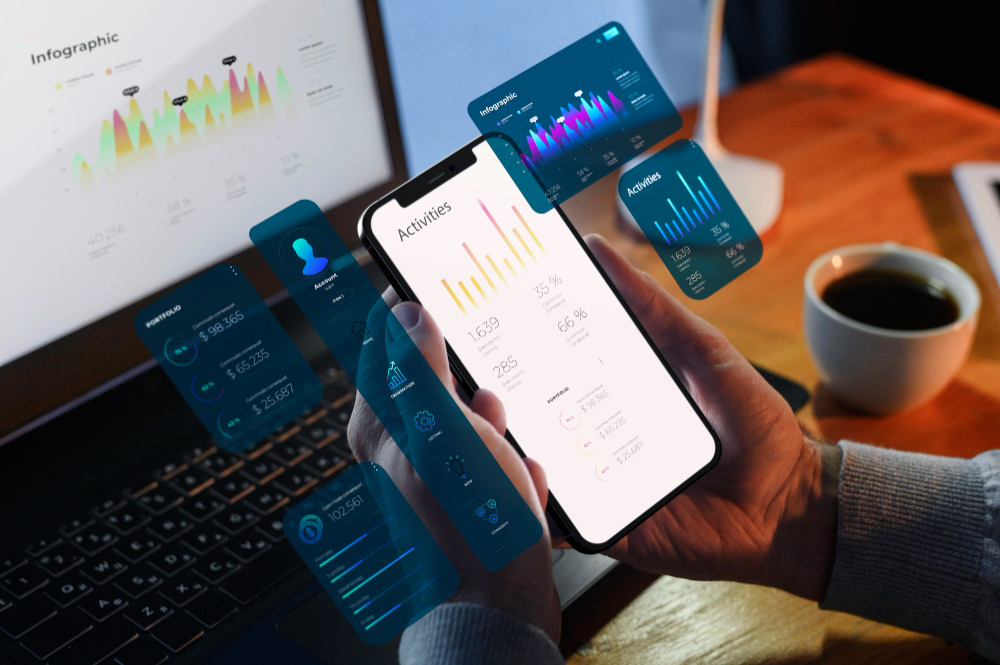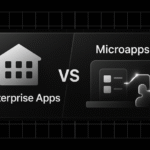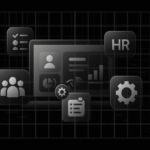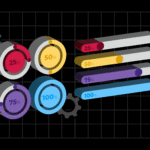In today’s digital world, simplicity and speed are essential. Microapps are the answer. Unlike traditional applications with multiple features and functions, microapps are lightweight, task-focused tools that quickly and easily solve a specific need.
Microapps are a productivity game-changer because they automate a single workflow and provide quick access to essential functions. But what are they, and how do they fit into the bigger world of applications and software?
What is a Microapp?
A microapp is an application that provides precisely what a department or employee needs. It performs custom and specific tasks without entering a megastructure application. It consists of three components:
- An authentication layer plugging into a business’s access management and identity service provider. For example, AuthO, Okta, Active Directory, and more.
- It has a CRUD (create, read, update, delete) interface that interacts with the data source, such as a database, and one or more APIs that interact with SaaS and homegrown applications, such as your employee time-tracking software.
- It features a notification layer that alerts designated team members when specific criteria are met. For example, it alerts a manager about an expense that needs approval.
The microapp is also UI-responsive and provides convenient interactions, whether seated at your desk or at the airport with your phone. Furthermore, interactions with a microapp take less than one minute. An interaction is often initiated when the employee is alerted to a pending task.
👉 Learn how you can build and sell niche tools to earn a passive income.
Why Are Microapps Important?

The trend of using microapps is driven by two ends of the software spectrum:
- Employees often disrespect monolithic enterprise software, leading IT departments to consider alternative approaches to improving employee productivity.
- The department recognizes that Excel spreadsheets are not always the most effective tool for tracking company metrics.
5 Benefits of Microapps
These small, focused applications made to perform dedicated tasks and functions within a large software ecosystem have loads of benefits:
1. Provides Easy Maintenance
With microapps, simplicity is key. You find five to ten smaller apps when you break down a large app with many features. While this might seem overwhelming, the benefit is that these smaller apps work independently.
This makes managing and updating them easier than managing a single complicated app. In this way, micro apps align with the concept of atomic design, which focuses on creating smaller, manageable components.
2. Fast and Professional Development
One advantage of microapps is the time and effort they save during development. Developers can reuse components from existing microapps to build new ones, eliminating the need to start from scratch every time.
This approach is valuable for software companies that need to track their development hours. With microapps, developers can focus on user-requested features and updates while staying within their allocated work hours. Microapps make things easier for users and developers, highlighting their effectiveness and efficiency.
3. Versatile And Lean
Major social media sites and businesses are adopting microapps to streamline processes outside their primary platforms.
If the previous points aren’t convincing enough, there is more to consider. Microapps are flexible due to their independent, small-scale structure. Each app can operate independently and is backed by a dedicated database.
This makes them well-suited for mobile devices without requiring significant processing power on desktop computers.
Their streamlined design enhances security compared to larger, monolithic applications, which often hide vulnerabilities from developers.
Microapps can be easily customized; developers can add, remove, or update features without impacting the rest of the application.
4. Supports Engaging And Interactive Features
Microapps are favored for their modular and minimalist design. They offer lightweight, interactive features that enhance products and make them more appealing to users.
This is especially relevant for e-commerce sites and marketing tools like promo code generators. Microapps include self-contained backend features, which help eliminate code duplication.
5. Easy to Deploy and Scale
One key benefit of microapps is their ability to enable faster server-side scalability, helping reduce strain on AWS and other cloud providers.
Additionally, they can be easily deployed across various devices and platforms without needing separate coding, features, or versions.
Microapps comply with HTML and HTML5 standards, allowing them to be embedded into existing applications or websites. Overall, they are an effective solution for business processes and personal tasks.
Microapps vs. Traditional Applications: Side-by-Side Comparison
Aspect |
Microapps |
Traditional Applications |
Definition |
Lightweight, task-focused applications are made to handle specific functionalities. |
Comprehensive software with multiple features |
Use |
Solves specific tasks or workflows (e.g., viewing a report and approving a request) |
Managing complex multi-faced processes like enterprise resource planning |
Performance |
Fast and responsive due to the limited scope and size |
Slower performance if the app is resource-intensive |
User Needs |
Simple, task-specific solutions with a minimal learning curve |
Comprehensive tools with a huge learning curve |
Integration |
Integrates into larger platforms like Saas | Customization is possible, but it needs substantial resources. |
Customization |
Customizable for specific tasks or workflows |
Customization is possible, but it needs substantial resources |
Device |
Made for mobile and multi-platform use | You might need a particular platform version, such as desktop or mobile. |
Cost |
Cost-effective for small, focused needs |
Higher and ongoing costs |
Example |
Approvals for expense reports, quick IT support requests |
CRM systems, project management, and accounting software |
👉 Check out the best warehouse management tools or build one yourself
Microapps vs. Micro Services

You often hear that microapps are built on microservice architecture, which can be confusing. Still, both provide similar functionality. The primary difference is that one is an app, while the other is a development methodology.
The methodology they use to build a suite of smaller services that each run a process autonomously and independently. Each communicates with lightweight tools and an HTTP resource API.
These services are designed to resolve specific business needs, working independently of automated deployment machinery. In the past, application architecture was primarily monolithic, making it difficult to change the system.
Regardless of how minor, a single alteration could impact the entire system. In contrast, microservices eliminate these complications. With microservices, scaling the whole application or building and deploying a completely new version is no longer necessary to modify a specific part.
This brings us to the question: How are microapps and microservices different, given that both aim to decouple complex functionality into more straightforward, manageable software?
Can Microservices and Microapps Work Together?
Microservices are modular services that connect applications’ front and back ends. They communicate through REST APIs, enabling different application components to work together seamlessly.
These services operate behind the scenes, performing tasks that users typically don’t see. This architecture simplifies and accelerates the development process. Developers can easily customize or modify specific services without impacting the entire application.
If one service encounters an issue, it can be addressed and redeployed independently, ensuring that all other services remain unaffected. Microapps, on the other hand, serve as the interface for these microservices.
They present a user-friendly software solution that interacts with users to accomplish specific tasks.
While an individual microservice may not provide significant value to the user, when several microservices are combined into a microapp, they work together to fulfill a common goal, resulting in a more meaningful user experience.
Microservices’ architecture powers microapps, and a key feature is their decoupling. This characteristic allows micro apps to remain lightweight and flexible, which is crucial for identifying and fixing bugs or glitches.
Problems can be isolated and resolved without affecting the entire application. This approach represents a modern, cost-effective strategy for scaling business services and products.
Martin Fowler made a significant contribution to the industry by developing the service-oriented architecture model.
The five key components that constitute the microservices architecture are:
- Microservices
- Containers
- Service Mesh
- Service Discovery
- API Gateway
These components enable a robust, efficient, and scalable application environment.
👉 Learn when to use Enterprise apps compared to Microapps
Wrap-Up: What is a Microapp?
Recently, microapps have surged in popularity, coinciding with advances in modern smartphones and the rise of resource-intensive applications.
These applications are designed to be small, straightforward, and lightweight, with a focus on a specific task.
These single-purpose applications are appealing; individual users and businesses prefer agile, straightforward apps that focus on one function over multi-functional ones, which may introduce bugs, lag, and unexpected errors.
In custom application development, seamless integration and cutting-edge features are essential to delivering a user-friendly, dynamic experience.
At Microapp, we offer a comprehensive range of options for custom application development, complemented by innovative tools and extensions that enhance user engagement.
Reach out to us today to discuss your next project.
FAQ
What industries benefit most from microapps?
Microapps benefit industries such as IT, HR, healthcare, finance, retail, and logistics by streamlining workflows, automating repetitive tasks, and enhancing efficiency. They are invaluable in environments that require quick, task-specific solutions and seamless integration with existing systems.
Are micro apps suitable for small businesses?
Yes, microapps are suitable for small businesses. They are cost-effective, easy to implement, and focus on specific tasks, making them ideal for streamlining operations without the complexity or expense of traditional applications.
How do micro apps affect app development costs?
Microapps reduce app development costs compared to traditional applications. Since they focus on specific tasks or functionalities, they require less time, fewer resources, and simpler development processes. Microapps often leverage low-code or no-code platforms, further lowering costs.






